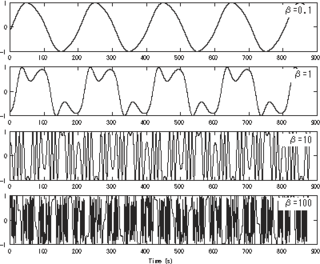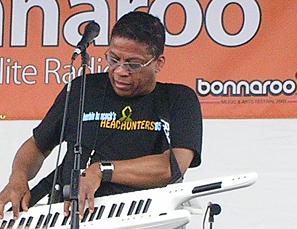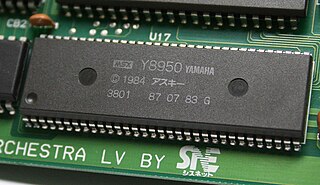
Frequency modulation synthesis is a form of sound synthesis whereby the frequency of a waveform is changed by modulating its frequency with a modulator. The (instantaneous) frequency of an oscillator is altered in accordance with the amplitude of a modulating signal.

Digital music technology encompasses digital instruments, computers, electronic effects units, software, or digital audio equipment by a performer, composer, sound engineer, DJ, or record producer to produce, perform or record music. The term refers to electronic devices, instruments, computer hardware, and software used in performance, playback, recording, composition, mixing, analysis, and editing of music.

MSX is a standardized home computer architecture, announced by ASCII Corporation on June 16, 1983. It was initially conceived by Microsoft as a product for the Eastern sector, and jointly marketed by Kazuhiko Nishi, the director at ASCII Corporation. Microsoft and Nishi conceived the project as an attempt to create unified standards among various home computing system manufacturers of the period, in the same fashion as the VHS standard for home video tape machines. The first MSX computer sold to the public was a Mitsubishi ML-8000, released on October 21, 1983, thus marking its official release date.
A music workstation is an electronic musical instrument providing the facilities of:

An electronic keyboard, portable keyboard, or digital keyboard is an electronic musical instrument based on keyboard instruments. Electronic keyboards include synthesizers, digital pianos, stage pianos, electronic organs and digital audio workstations. In technical terms, an electronic keyboard is a rompler-based synthesizer with a low-wattage power amplifier and small loudspeakers.

Yamaha XG is an extension to the General MIDI standard, created by Yamaha. It is similar in purpose to the Roland GS standard.

A sound module is an electronic musical instrument without a human-playable interface such as a piano-style musical keyboard. Sound modules have to be operated using an externally connected device, which is often a MIDI controller, of which the most common type is the musical keyboard. Another common way of controlling a sound module is through a sequencer, which is computer hardware or software designed to record and playback control information for sound-generating hardware. Connections between sound modules, controllers, and sequencers are generally made with MIDI, which is a standardized interface designed for this purpose.
The Yamaha TX81Z is a rack-mounted (keyboard-less) frequency modulation (FM) music synthesizer, released in 1987. It is also known as a keyboard-less Yamaha DX11. Unlike previous FM synthesizers of the era, the TX81Z was the first to offer a range of oscillator waveforms other than just sine waves, conferring the new timbres of some of its patches when compared to older, sine-only FM synths. The TX81Z has developed a famous reputation, largely based on some of its preset bass sounds. The Yamaha DX11 keyboard synth was released the following year, offering improved editing abilities.

The Roland Corporation has manufactured several keytars.

The Yamaha Motif is a series of music workstation synthesizers, first released by Yamaha Corporation in August 2001. The Motif replaced the EX series in Yamaha's line-up and was also based on the early Yamaha S series. Other workstations in the same class are the Korg Kronos and the Roland Fantom G. The series' successor is Yamaha Montage, released in 2016, followed up by the Yamaha Montage M in 2023.

The Nord Modular series is a line of synthesizers produced by Clavia, a Swedish digital synthesizer manufacturer. The Nord Modular series, in common with their sister range the Nord Lead series, are analogue modelling synthesizers, producing sounds that approximate those produced by conventional analogue synths by using DSP chips to digitally model analogue circuitry.

A wind controller, sometimes referred to as a wind synthesizer, is an electronic wind instrument. It is usually a MIDI controller associated with one or more music synthesizers. Wind controllers are most commonly played and fingered like a woodwind instrument, usually the saxophone, with the next most common being brass fingering, particularly the trumpet. Models have been produced that play and finger like other acoustic instruments such as the recorder or the tin whistle. The most common form of wind controller uses electronic sensors to convert fingering, breath pressure, bite pressure, finger pressure, and other gesture or action information into control signals that affect musical sounds. The control signals or MIDI messages generated by the wind controller are used to control internal or external devices such as analog synthesizers or MIDI-compatible synthesizers, synth modules, softsynths, sequencers, or even non-instruments such as lighting systems.

The Yamaha YM2151, also known as OPM is an eight-channel, four-operator sound chip. It was Yamaha's first single-chip FM synthesis implementation, being created originally for some of the Yamaha DX series of keyboards. Yamaha also used it in some of their budget-priced electric pianos, such as the YPR-7, -8, and -9.

A guitar synthesizer is any one of a number of musical instrument systems that allow a guitarist to access synthesizer capabilities.

Roland JX-8P is a 61-key, velocity- and aftertouch-sensitive, six-note polyphonic, almost entirely analog synthesizer released by Roland in 1985. In a time of rising popularity of digital frequency modulation synthesizers, such as Yamaha DX7, JX-8P was marketed as the best of both worlds: while it was possible to create classic analog synth sounds, several new modulation parameters and redesigned hardware enabled it to produce certain types of sounds associated with FM synthesis, such as metallic percussive sounds. Likewise, traditional hands-on controls were replaced with a Yamaha DX7-style interface with membrane buttons and one "edit" slider.

Yamaha SY77 is a 16 voice multitimbral music workstation first produced by Yamaha Corporation in 1989. The SY77 is a synthesizer whose architecture combines AFM synthesis, AWM2 for ROM-borne sample-based synthesis, and the combination of these two methods christened Realtime Convolution and Modulation Synthesis (RCM). The same technology was also packaged in a rack-mounted module released simultaneously, the TG77.

The Yamaha Y8950 is a sound chip, produced in 1984. It is also known as MSX-Audio as it was designed for inclusion in an expansion cartridge for the MSX personal computer.

The Philips NMS-1205 was a MSX AUDIO cartridge using the Yamaha Y8950 chip . NMS-1205 was only sold in Europe for the MSX Personal Computer.
The Bell Labs Digital Synthesizer, better known as the Alles Machine or Alice, was an experimental additive synthesizer designed by Hal Alles at Bell Labs during the 1970s. The Alles Machine used computer-controlled 16-bit digital synthesizer operating at 30k samples/sec with 32 sine-wave oscillators. The Alles Machine has been called the first true digital additive synthesizer, following on earlier Bell experiments that were partially or wholly implemented as software on large computers. Only one full-length composition was recorded for the machine, before it was disassembled and donated to Oberlin Conservatory's TIMARA department in 1981. Several commercial synthesizers based on the Alles design were released during the 1980s, including the Atari AMY sound chip.

The Yamaha DX21 is a digital controlled bi-timbral programmable digital FM synthesizer with a four operator synth voice generator which was released in 1985. It uses sine wave-based frequency modulation (FM) synthesis. It has two FM tone generators and a 32-voice random-access memory (RAM), 32 user voices and 128 read-only memory (ROM) factory preset sounds. As a programmable synth, it enables users to create their own unique synthesized tones and sound effects by using the algorithms and oscillators. The instrument weighs 8 kg (17.6 lbs). On its release, it sold for $795.

















